The Stilwell Road est un film américain de genre Documentaire avec Ronald Reagan
The Stilwell Road (1945)

Si vous aimez ce film, faites-le savoir !
Durée 50minutes
OrigineEtats-Unis
Genres Documentaire
Themes Transport, Aviation, Documentaire sur la guerre, Documentaire historique, Politique, Documentaire sur la Seconde Guerre mondiale
Note63%










The Stilwell Road was a propaganda film produced by the American Office of War Information and the British and Indian film units in 1945 detailing the creation of the Ledo Road, also known as the Stilwell Road after the U.S. General Joseph Stilwell. The movie was narrated by Ronald Reagan.
The film opens with a message telling the audience that the film is about more than the building of a road in the jungle; it is also the story of Scots, Irish, English, Americans, Africans, Indians, and Chinese working together to win the war, and that they are now ready to work together to win a peaceful post war world as well.
[...]Voir plus...
Acteurs
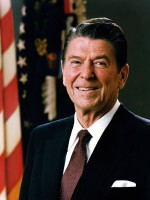
Ronald Reagan
(Narrateur)
Commentaires
Postez un commentaire :
Suggestions de films similaires à The Stilwell Road
Il y a 67 films ayant les mêmes acteurs, 8969 ayant les mêmes genres cinématographiques, 13805 films qui ont les mêmes thèmes (dont 82 films qui ont les mêmes 6 thèmes que The Stilwell Road), pour avoir au final 70 suggestions de films similaires.Si vous avez aimé The Stilwell Road, vous aimerez sûrement les films similaires suivants :
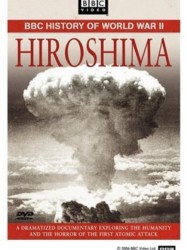
Hiroshima (2005)
, 1h29Origine Royaume-uni
Genres Drame, Documentaire
Thèmes L'environnement, La mer, Transport, Aviation, Documentaire sur l'environnement, Documentaire sur la guerre, Documentaire historique, Documentaire sur le nucléaire, Documentaire sur les technologies, Politique, Documentaire sur la Seconde Guerre mondiale
Acteurs John Hurt, Ed Bishop, Katsumi Chō, Naoko Mori, Ian Shaw, Shane Rimmer
Note76%





À 8h15 précises ce 6 août 1945, le monde a changé. 40.000 personnes trouvent instantanément la mort, mais ce sont bien 200.000 décès qui seront provoqués par l´explosion de la première bombe nucléaire sur Hiroshima, au Japon. Ce documentaire exceptionnel de 90 minutes n´est pas « Un énième film anti-guerre » déclare son réalisateur Paul Wilmshurst, « mais bien l´analyse neutre et objective d´une décision cruciale. Il ne s´agit pas d´être pro-américain ou pro-japonais, j´ai simplement voulu raconter la vérité.
[...]Voir plus...

No More Hiroshima (1984)
Genres Documentaire
Thèmes L'environnement, La mer, Transport, Aviation, Documentaire sur l'environnement, Documentaire sur la guerre, Documentaire historique, Documentaire sur le nucléaire, Documentaire sur les technologies, Politique, Documentaire sur la Seconde Guerre mondiale

Target for Tonight (1941)
, 48minutesRéalisé par Harry Watt
Origine Royaume-uni
Genres Guerre, Documentaire, Historique
Thèmes Transport, Aviation, Documentaire sur la guerre, Documentaire historique, Documentaire sur les technologies, Politique, Documentaire sur la Seconde Guerre mondiale
Note62%





Before the film, several text cards explain bombers and the Royal Air Force chain of command. The film begins with an observation aircraft flying over and dropping a box of undeveloped film. Bomber Command develops the film and analyzes the resulting photographs, which are presented for the audience to see. There has been a massive build-up by German forces in the subject area for the past few months. The film shows the planning of the mission, even detailing how the bomber wing chooses munitions for the task.
[...]Voir plus...
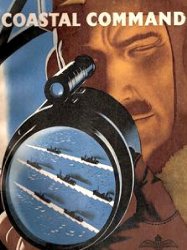
Coastal Command (1942)
, 1h13Origine Royaume-uni
Genres Guerre, Documentaire
Thèmes Transport, Aviation, Documentaire sur la guerre, Documentaire historique, Politique, Documentaire sur la Seconde Guerre mondiale
Note66%





In 1942, a Sunderland flying boat with Pilot Roger Hunter and Flight Sergeant Charles Norman Lewis as crew, set out on a patrol, flying out of their Scotland air base.

Native New Yorker (2005)
, 13minutesOrigine Etats-Unis
Genres Documentaire
Thèmes Les attentats du 11 septembre 2001, L'environnement, Religion, Le terrorisme, Transport, Aviation, Documentaire sur le droit, Documentaire sur la guerre, Documentaire historique, Documentaire sur la politique, Documentaire sur la religion, Documentaire sur les technologies, Documentaire sur le terrorisme, Documentaire sur les villes, Politique, Religion musulmane, Film catastrophe, Film de catastrophe aérienne, Détournement d'avion
Note80%





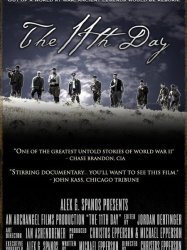
The 11th Day (2005)
Genres Guerre, Documentaire
Thèmes La mer, Transport, Documentaire sur la guerre, Documentaire historique, Politique, Documentaire sur la Seconde Guerre mondiale
Note80%





On May 20, 1941, thousands of elite German paratroopers assaulted the island of Crete. It was the beginning of the Battle of Crete - the largest German airborne operation of World War II. They had expected to control the island within a few days; after all, they only needed to occupy Paris for a week before France surrendered. What they hadn’t expected was that the men, women, and even children of Crete would fight them to their dying breath.
 , 1h27
, 1h27Origine Etats-Unis
Genres Documentaire
Thèmes Les attentats du 11 septembre 2001, Religion, Le terrorisme, Transport, Aviation, Documentaire sur le droit, Documentaire sur la guerre, Documentaire historique, Documentaire sur la politique, Documentaire sur la religion, Documentaire sur les technologies, Documentaire sur le terrorisme, Documentaire sur les villes, Politique, Religion musulmane, Film catastrophe, Film de catastrophe aérienne, Détournement d'avion
Acteurs Kathleen Turner
Note65%





 , 58minutes
, 58minutesOrigine Pakistan
Genres Documentaire
Thèmes Les attentats du 11 septembre 2001, Religion, Le terrorisme, Transport, Aviation, Documentaire sur le droit, Documentaire sur la guerre, Documentaire historique, Documentaire sur la politique, Documentaire sur la religion, Documentaire sur les technologies, Documentaire sur le terrorisme, Politique, Religion musulmane, Film catastrophe, Film de catastrophe aérienne, Détournement d'avion
The film follows with the journey of the Pakistani rock star Salman Ahmad, a US citizen of Pakistani origin, asks fellow Muslims what it’s like to be Muslim in post-9/11 America.
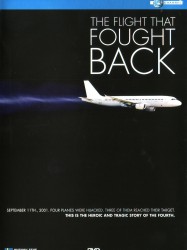
The Flight That Fought Back (2005)
, 1h30Origine Etats-Unis
Genres Drame, Documentaire
Thèmes Les attentats du 11 septembre 2001, Religion, Le terrorisme, Transport, Aviation, Documentaire sur le droit, Documentaire sur la guerre, Documentaire historique, Documentaire sur la politique, Documentaire sur la religion, Documentaire sur les technologies, Documentaire sur le terrorisme, Politique, Religion musulmane, Film catastrophe, Film de catastrophe aérienne, Détournement d'avion
Acteurs Greg Benson, Pej Vahdat
Note73%





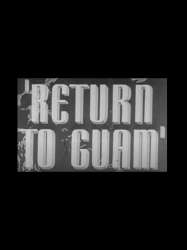
Return to Guam (1944)
, 19minutesRéalisé par Richard Brooks
Origine Etats-Unis
Genres Documentaire
Thèmes La mer, Transport, Documentaire sur la guerre, Documentaire historique, Politique, Documentaire sur la Seconde Guerre mondiale, Forces armées des États-Unis
Note22%





 Connexion
Connexion